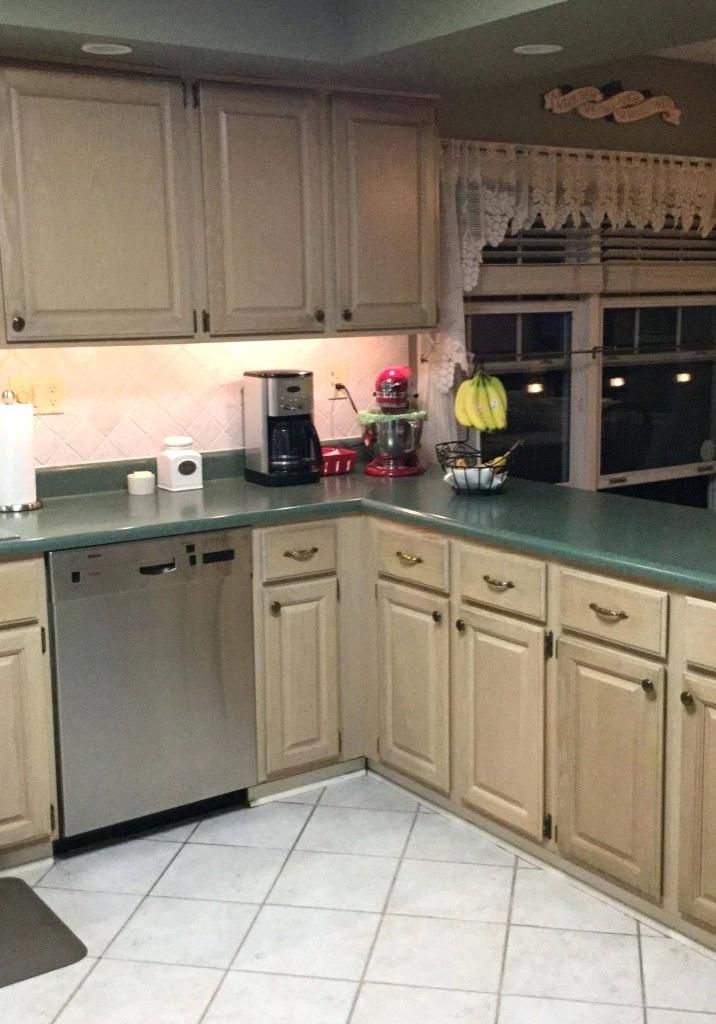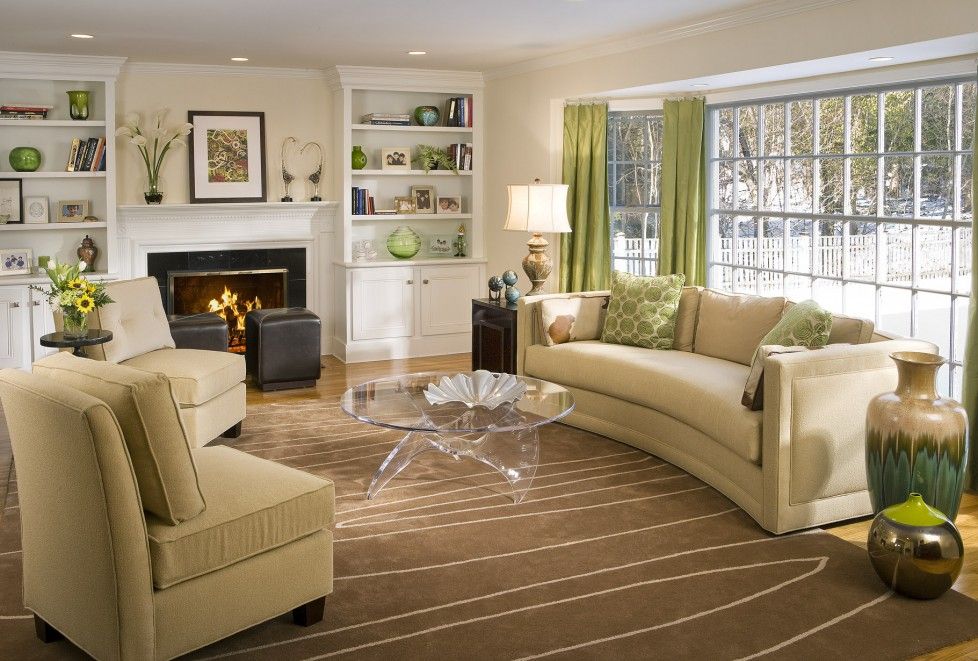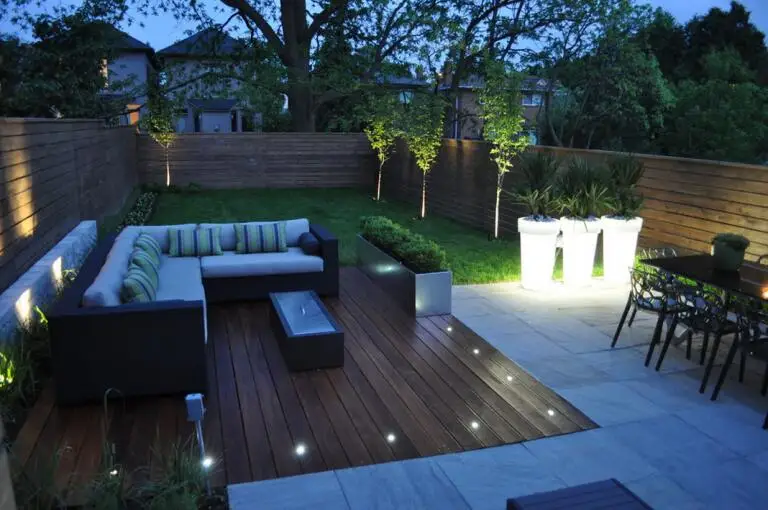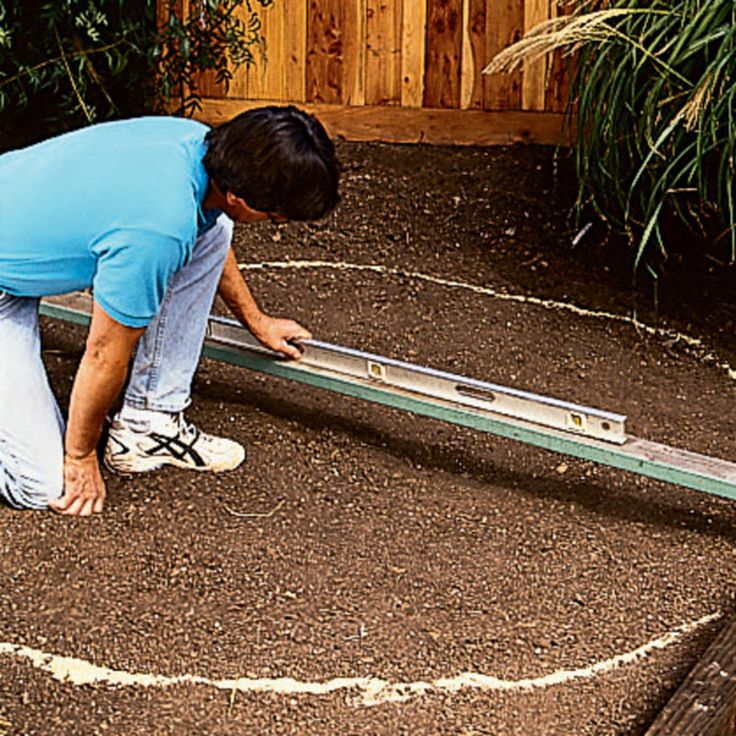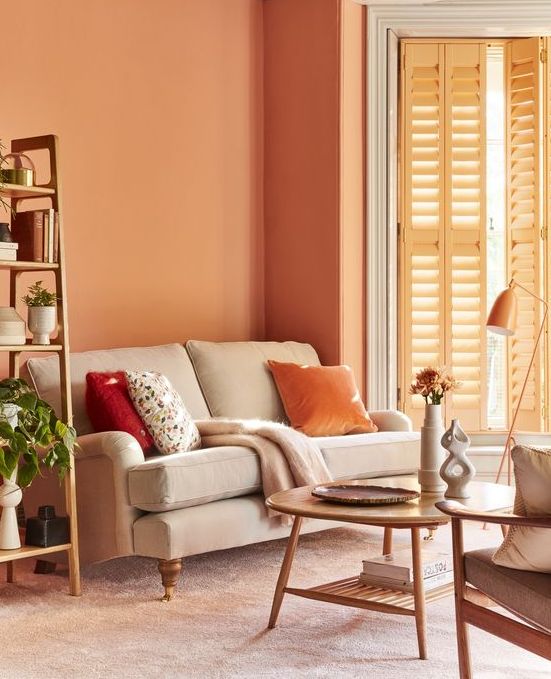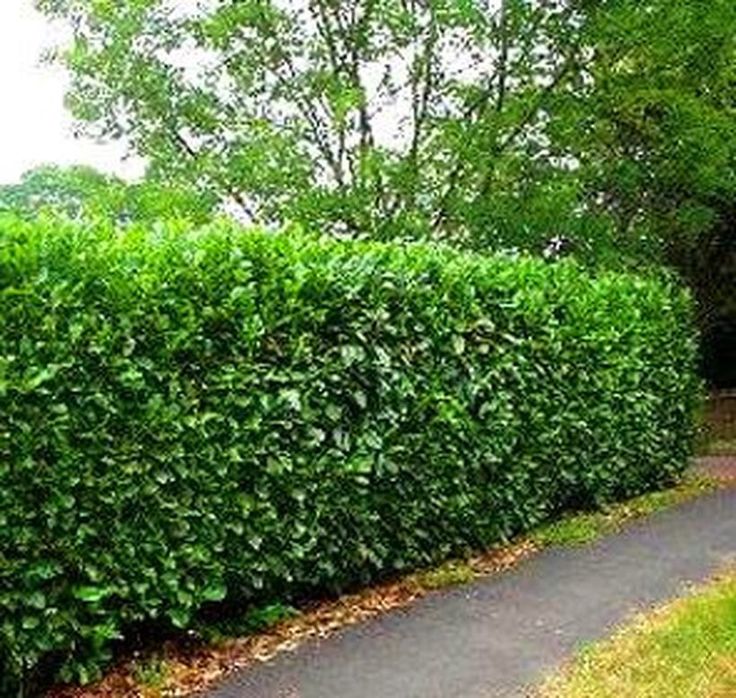How to reface kitchen cabinet
Can I Reface My Kitchen Cabinets Myself?
Refacing your kitchen cabinets is a homeowner-friendly project that can drastically improve the look of your kitchen. Refacing refers to the process of replacing your cabinet doors and drawers and refinishing your cabinet boxes. This can save a lot of time and money since you won’t have to worry about removing the old cabinet boxes and buying new ones.
Disclosure: This blog post contains affiliate links and we may receive a small commission for purchases made. These are products we highly recommend.
Kitchen Cabinets Refacing Materials
Before you start this DIY project, make sure you have the following tools:
- Screwdriver
- Circular Saw
- Drill
- Drill Bits
- Finishing Nails
- File
- Laminate Cutter
- Veneer Edge Trimmer
Step-By-Step Guide To Refacing Kitchen Cabinets
Give your kitchen a new look by refacing cabinets. Not only is it a quick and easy makeover, but it is also cost-effective compared to remodeling. Refacing cabinets does require you to pay attention to details and have some experience working with tools. But you do not need to be a master carpenter to get refacing cabinets right. To help you get it right, here is our step-by-step guide to refacing cabinets.
In A Nutshell
Simply put, refacing kitchen cabinets can be done by the following:
- Remove the doors and drawers of each cabinet.
- Cover the front edges of the cabinets with peel and stick wood veneer.
- Hang the new cabinet doors with easy-to-install cup hinges.
- Attach the new drawer fronts to the existing drawers.
- Replace molding where needed.
- Add new hardware to all cabinets.
Step 1: Measuring Your Cabinets
You'll need to
measure your cabinets to ensure that you get the correct size for new doors, drawers, and end panels. You'll need to measure the following:
You'll need to measure the following:
- Drawer opening width
- End panel width
- Door opening height
- Door opening width
We advise you to sketch a basic outline of your kitchen cabinets and write down the measurements - both width and height - next to them. Check out our measuring guide to help keep track of everything as you plan to reface your kitchen cabinets.
Step 2: Ordering Your New Cabinet Doors & Drawers
Before you order your new cabinet doors and drawers, you need to take precise measurements. Decide how much of the door and drawer you want to extend past the face frame opening to create an overlay. The amount of overlay is determined by the hinges you install into the cabinets. You can choose whatever overlay you want, but 1/2-inch is a good place to start.
Once you've decided on the overlay and have measured your doors and drawers, you need to calculate your new cabinets' size.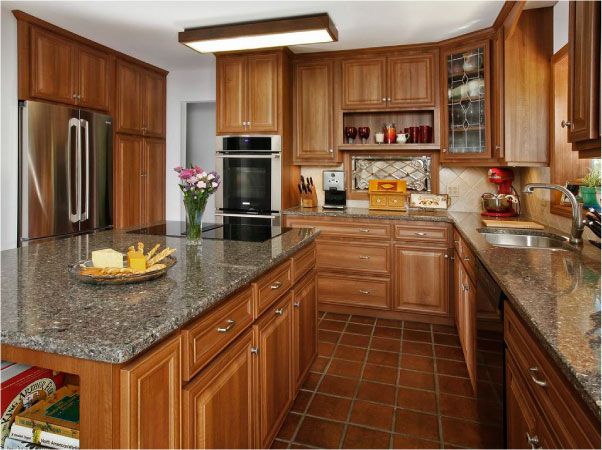 To do this, you need to double the overlay distance and add this to the opening size. This will give you the size of the cabinet door.
To do this, you need to double the overlay distance and add this to the opening size. This will give you the size of the cabinet door.
For example: If the opening is 20x22 inches, the door size with a 1/2 inch overlay, the final measurement would be 21x23 inches. Drawers are calculated the same way. Be sure to double-check all your measurements and calculations before placing your final order.
For a professional finish, your refacing process also needs to include covering the face of the cabinet frames with veneer. Additionally, you need to cover the end panels with 1/4 inch plywood.
Step 3: Getting The Right Materials
Before heading out to purchase your materials, ensure that it includes the following:
- Cabinet Doors
- Drawer fronts
- Veneer sheets
- Plywood
You will need to figure out how many veneer stripes you'll need to cover the face frames. Don’t forget to measure the panels and make a note of the sizes you'll need to purchase.
Don’t forget to measure the panels and make a note of the sizes you'll need to purchase.
Step 4: Prepare Your Cabinets
It is now time to prepare your cabinets for the refacing process, which includes doing the following:
- Empty the cabinets to avoid damage and dust.
- Remove the cabinet door by unscrewing the hinges.
- Remove the drawer fronts.
- Clean all the face frames and end panels with a rag dampened in denatured alcohol.
- Scuff up all surfaces with medium, grit sandpaper to ensure that the adhesive on the veneer and end panels bond well.
- After sanding, remove any dust with denatured alcohol.
Step 5: Install End Panels
Now that your cabinets are prepped and cleaned, you can start your kitchen's transformation. Start by adding the end panels, which can be done by attaching plywood with
construction adhesive.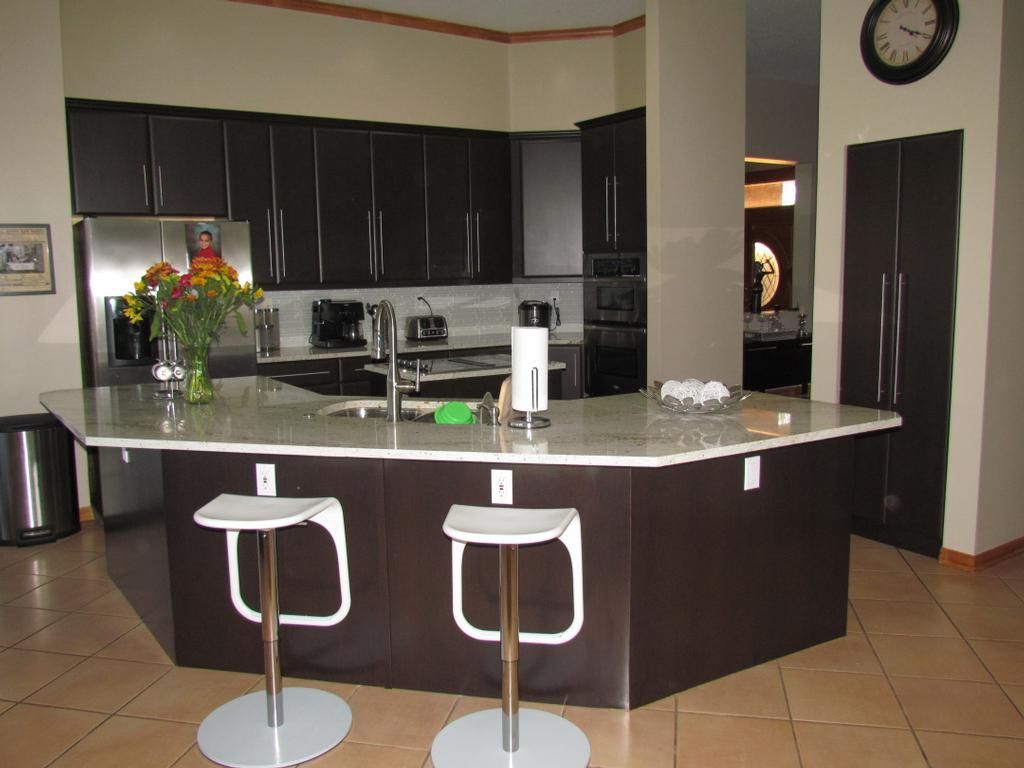 Use a few 3/4-inch finishing nails to securely hold it in place. Next, you can measure and cut the end panel to size so that its front edge is flush with the face frame's surface. While holding the end panel in place, mark and then cut where the toe-kick should go. Once you are 100% sure of the placement, you can install the panel with construction adhesive.
Use a few 3/4-inch finishing nails to securely hold it in place. Next, you can measure and cut the end panel to size so that its front edge is flush with the face frame's surface. While holding the end panel in place, mark and then cut where the toe-kick should go. Once you are 100% sure of the placement, you can install the panel with construction adhesive.
Step 6: Cutting & Applying The Veneer
When you reface your kitchen cabinets, don’t forget about the cabinet face frames. Using a laminate cutter, you can cut your veneer strips to the exact width and length needed before applying them. If you do not have this tool available, you can cut oversize strips of veneer with a sharp razor knife and then trim them once in place. To get the strips perfect from your veneer, measure the stiles and rails' width so that the strips fit.
You can now start applying the veneer to the outer stiles in a run of cabinets. Carefully align the veneer and gently press it down to the surface.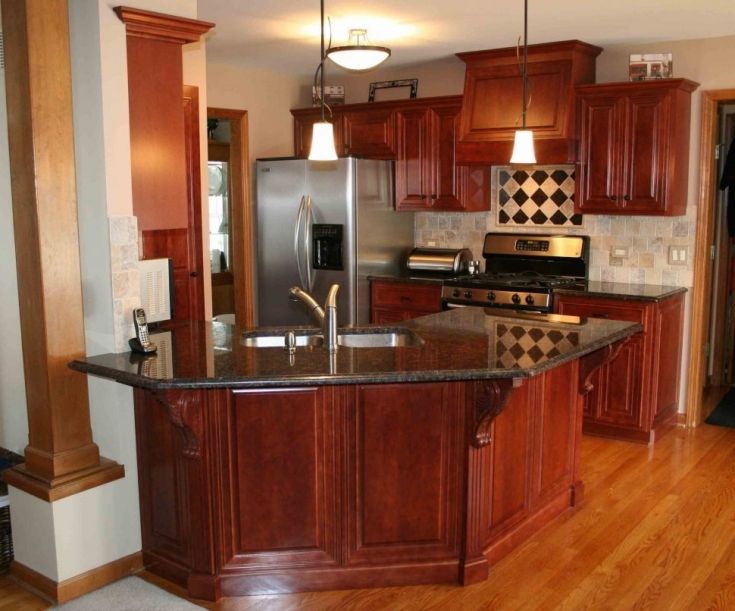 With a firm downward push, bond, and smooth the veneer by pressing it down with a veneer applicator tool. You can add the veneer to the remainder of the stiles. Touch up any unstained edges of the veneer with a matching stain pen.
With a firm downward push, bond, and smooth the veneer by pressing it down with a veneer applicator tool. You can add the veneer to the remainder of the stiles. Touch up any unstained edges of the veneer with a matching stain pen.
Step 7: Hang The New Cabinet Doors
Before you can hang the doors, you'll need to mount the cup hinges on the doors. To do this, simply line up the hinge and push it into the larger round recess. You can then tighten the screws and anchor the hinge. Once the hinges are secured, mark the center of the top hinge on the face frame stiles. You can calculate this distance by measuring from the top of the new door to the hinge center. Once you have that number, you need to subtract the overlay.
To secure the door, you can now line up the hinge center with the mark you made earlier and drill a pilot hole. Screw the top hinge plate into the stile before doing the same to the bottom hinge.
Step 8: Adding The Drawers
Before adding the drawers, you need to measure the drawer front placement.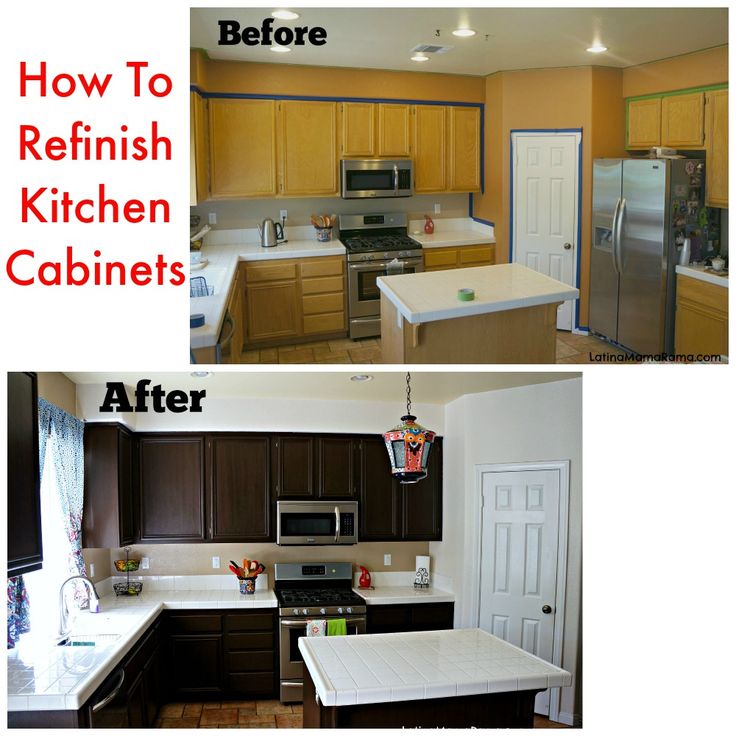 You'll need to measure the distance from the drawer box to the face frame stile. Additionally, you'll need to measure from the drawer bottom to the face frame drawer rail. Don't forget to add the overlay distance to these measurements. Mark these dimensions on the back of the drawer front to align the drawer before attaching it with four screws.
You'll need to measure the distance from the drawer box to the face frame stile. Additionally, you'll need to measure from the drawer bottom to the face frame drawer rail. Don't forget to add the overlay distance to these measurements. Mark these dimensions on the back of the drawer front to align the drawer before attaching it with four screws.
And that's it. For a professional finish, replace molding where needed and add new hardware. That’s how you reface your kitchen cabinets like a pro.
Finishing Up
And just like that, in 8 easy steps, you have refaced your kitchen cabinets. Now you can sit back and enjoy the fruits of your labor. As an added bonus for those planning to sell their houses in the future, upgrading your kitchen can have a
strong return on your investment! If you are wanting to upgrade your refacing project, you should consider adding glass cabinet doors to your design. These can be ordered pre-cut for glass, or you can modify your existing doors.
If you are struggling with getting started, or you have a list and are ready to talk style and material, feel free to give us a call at 1-855-669-5222 or an email at [email protected]. Our well-trained sales staff can help you with everything from measuring to checking out.
How to Reface Kitchen Cabinets (DIY)
Get the look of new cabinets in one weekend for one-third the cost!
Sponsored By: The Home Depot
A portion of this piece was created in partnership with The Home Depot, the largest home improvement retailer in the United States.
Time
Multiple Days
Complexity
Intermediate
Cost
$501-1000
Introduction
Tired of your kitchen cabinets? Instead of replacing them, consider cabinet refacing. It's DIY-friendly, and you can save thousands of dollars.
It's DIY-friendly, and you can save thousands of dollars.
Tools Required
- 4-in-1 screwdriver
- Brad nail gun
- Caulk gun
- Circular saw
- Cordless drill
- File
- Forstner drill bits
- Laminate slitter
- Miter saw
- Paper cutter
- Veneer tool
Overview of Refacing Cabinets
Refacing cabinets is a quick and easy way to change the look of your kitchen without the mess and expense of a complete remodeling. You simply cover the cabinet face frame with self-sticking wood veneer and the end panels with 1/4-in. plywood. Then replace the old doors and drawer fronts with new ones. Refacing costs about one-third what new cabinets would cost, plus you can leave the countertop in place for even greater savings. And by doing the work yourself, you’ll also save at least $1,000 in labor for a small kitchen, and a lot more if your kitchen is large.
Refacing cabinets does require attention to detail and some experience working with tools, but you don’t have to be a master carpenter. If you can measure and cut accurately, you shouldn’t have any trouble.
If you can measure and cut accurately, you shouldn’t have any trouble.
Special Tools for Working with Veneer
We use a Virutex laminate slitter to cut strips of veneer. It’s the perfect tool for this project, but if you don’t want to spend the money, you can rent a laminate slitter. A table saw also works.
You’ll need a veneer tool to apply adequate pressure for a good bond.
For cutting veneer strips to length, we used a paper cutter modified slightly for more accurate cuts. We found that even an inexpensive paper cutter works great for cutting veneer.
Project step-by-step (20)
Sign Up For Our Newsletter
Complete DIY projects like a pro! Sign up for our newsletter!
Do It Right, Do It Yourself!
Step 6
How to Order New Doors and Drawers
Family Handyman
There are three standard types of cabinet doors: overlay, inset and 3/8-in. lip (Figure B). Regardless of what type of doors you currently have, in most cases, you can replace them with overlay doors that use modern, fully adjustable cup hinges.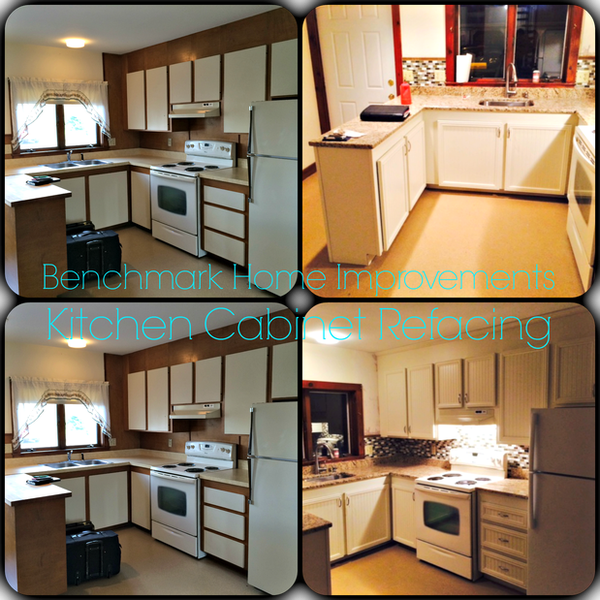 And that’s the situation we’re showing here.
And that’s the situation we’re showing here.
To size the doors, you’ll need to decide how much of the door you want to extend past the face frame opening. This is called the overlay distance and is determined by the hinges you install. To keep it simple, our expert cabinet remodel builder gives his customers a choice between 1/2-in. overlay, which is the most common, or 1-1/4- in. overlay. Depending on the hinge, you can choose a different overlay if you like. The 1-1/4-in. overlay doors hide more of the face frame for a more contemporary look. But the extra door width can cause problems. You have to measure carefully at inside corners and between doors to make sure there’s enough room. And remember, the new drawer fronts will be the same width, so check at inside corners to make sure there’s clearance for the drawers to open without handle conflicts. Also, there’s usually not enough space to add the extra 1-1/4 in. to the top and bottom of both doors and drawer fronts, so you may have to customize these overlay distances.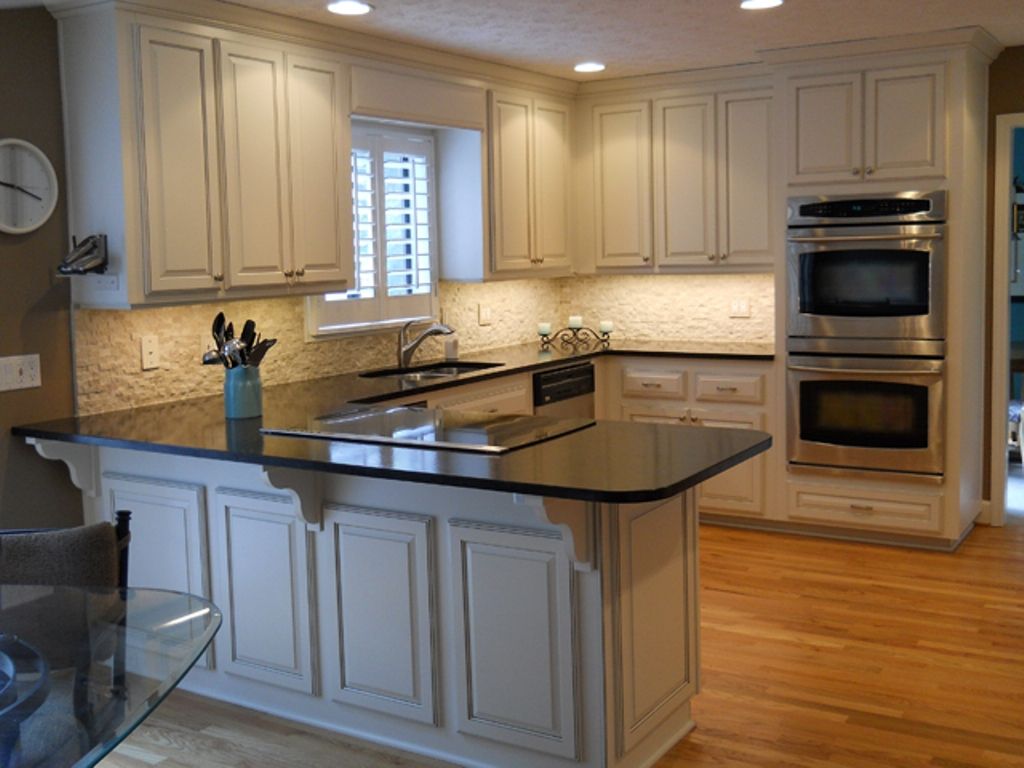
For our kitchen, we ordered doors that overlay the cabinet 1-1/4 in. on the sides and bottom, but reduced the top overlay to 3/4 in. Then he reduced the top and bottom overlay of the drawers to 3/4 in. to avoid conflict with a built-in breadboard. If you decide to order an overlay greater than 1/2 in., you can check the fit by applying tape to the face frame to represent the outside edges of the doors and drawers. This allows you to visualize the doors installed and alert you to any problems.
The most critical part of the cabinet door refacing job is measuring for and ordering the new doors and drawers. Start by making a sketch of each wall of cabinets showing the doors and drawers. Then measure the openings and write down the measurements—width first, then height (Figure A). Double the overlay distance and add this to the opening size to get the size of the door or drawer. For example, if the opening is 18 x 20 in., the door size with a 1/2-in. overlay would be 19 x 21 in. If you want a pair of doors to cover one opening, add two times the overlay to the opening size as usual. Then subtract 1/4 in. for clearance and divide this number by two to get the size of each door.
If you want a pair of doors to cover one opening, add two times the overlay to the opening size as usual. Then subtract 1/4 in. for clearance and divide this number by two to get the size of each door.
Calculate drawer front sizes the same way. Add two times the overlay distance to the opening size to arrive at the drawer front size.
Inside corner cabinets with or without rotating shelves can be a little trickier. We found that we can replace most existing corner cabinet doors with a “scissors-hinged” door—that is, a pair of doors hinged together and hung from one pair of hinges (see below). Ask your cabinet door supplier for help figuring the size of corner cabinet resurface doors.
Double-check all your measurements and calculations before you place the order.
Step 7
Where to Get Your Materials
Family Handyman
In addition to new drawer and door fronts, a typical cabinet refacing job includes covering the face of the cabinet frames with veneer and the end panels with 1/4-in.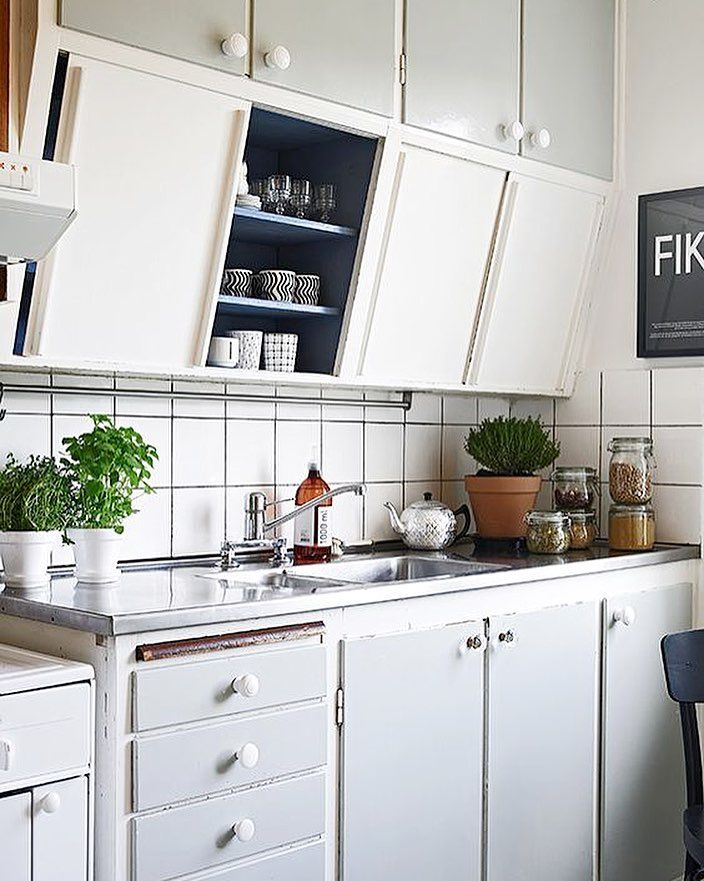 plywood to match. While it’s optional, most cabinet door refacing projects also include a new cove molding at the top of the cabinets and a thin layer of matching plywood to cover the cabinet toe-kick.
plywood to match. While it’s optional, most cabinet door refacing projects also include a new cove molding at the top of the cabinets and a thin layer of matching plywood to cover the cabinet toe-kick.
We ordered doors, drawer fronts, veneer, plywood and moldings prefinished from the manufacturer, but our supplier only sells to professionals. You can search online for cabinet-refacing supplies to find companies that will provide all the parts prefinished, or you can buy unfinished parts and finish them yourself. A few sources for unfinished doors are Distinctivedoordesigns.com and Rawdoors.net. At Rockler.com, you’ll find doors and 2 x 8-ft. sheets of veneer with pressure-sensitive adhesive (PSA) on the back. Ask at your local lumberyard for 1/4-in. hardwood plywood and moldings.
Measure and make a list of the veneer strips you’ll need to cover the face frames. From this list, figure out how many 24 x 96-in. sheets of PSA-backed veneer sheets you’ll need. Allow extra material, though.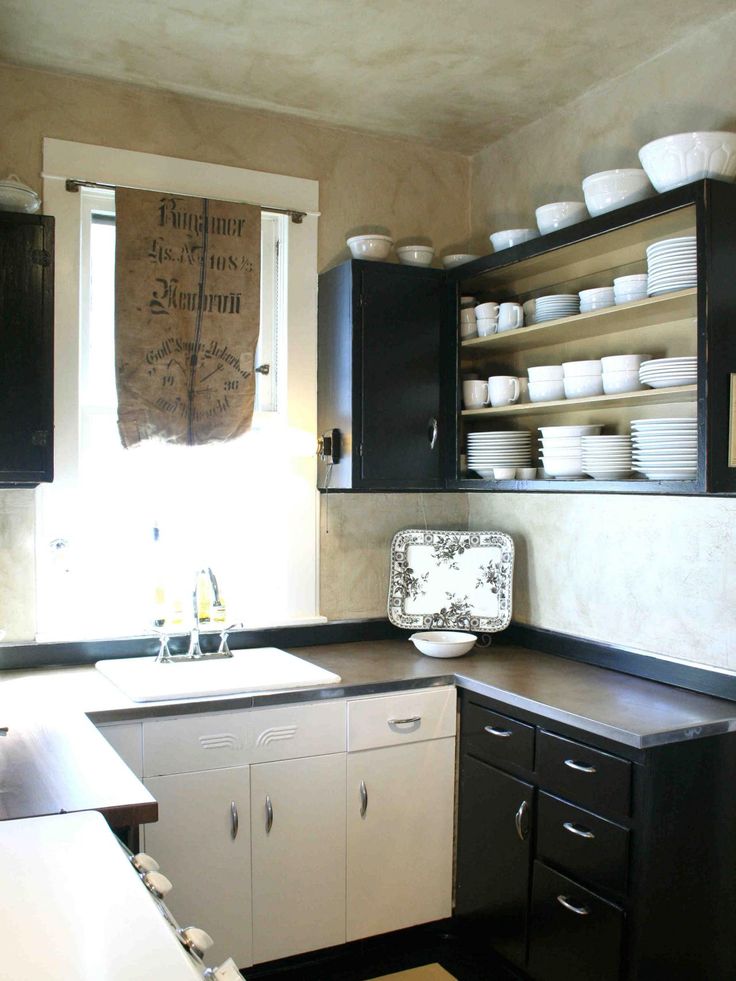 There are a few inches on the outside edges of PSA veneer that are unusable. On average, one sheet will cover face frames for about 15 doors. Expect to spend about $90 per sheet for the veneer.
There are a few inches on the outside edges of PSA veneer that are unusable. On average, one sheet will cover face frames for about 15 doors. Expect to spend about $90 per sheet for the veneer.
Then measure the end panels and make a list of the sizes you need. You can order the plywood cut to rough size from some online suppliers, or figure out how many 4 x 8-ft. sheets of 1/4- in. plywood to buy from the lumberyard. The face frames on most modern cabinets overhang the end panel slightly. Rather than cut off this overhang, which is messy and time-consuming, We created a flush surface by gluing a filler panel to the end first. Most cabinets have either a 1/8-in. or a 1/4-in. overhang, so check yours and buy the appropriate thickness of plywood or hardboard to fill the space. Finally, make a list of the moldings you’ll need, including the toe-kick cover.
You’ll also need denatured alcohol, rags, medium-grit sanding sponge, construction adhesive, 3/4-in. brad nails and a stain pen and colored wood putty, not wood filler to match the new stain color.
Originally Published: January 23, 2019
Similar Projects
Popular How-To Videos
ⓘ
12 ways to update the kitchen set
Natalia | 02/26/2019 | Updated | Kitchen furniture | 81 412 views | 2 comments
Contents of the article
For a domestic person, the kitchen is not only a place where food is prepared. This is a place for family lunches and dinners, a place to meet friends and family. All this means only one thing - the kitchen should not only be comfortable for the hostess, but also attractive in appearance. Every piece of furniture and decor matters, and even more so the kitchen set. When cracks and stains appear on it, or when it no longer matches the style of the kitchen and the tastes of the owners, many people think about buying a new headset. But is it always advisable to spend money on new furniture if you can ennoble the existing one? If the headset is still strong, outdated in size and layout, then you can transform it with your own hands.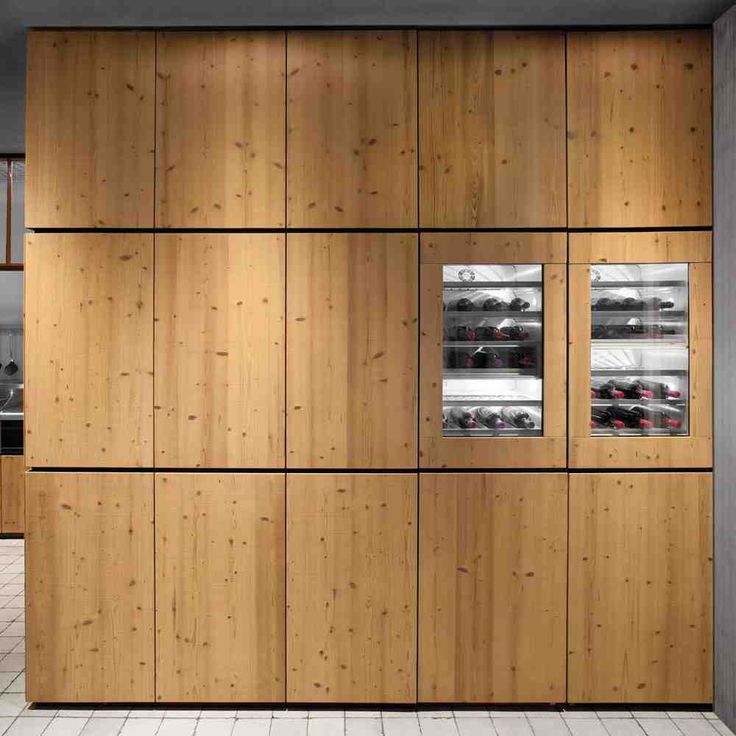 Consider the most popular and effective ways to update the kitchen set.
Consider the most popular and effective ways to update the kitchen set.
Self-adhesive film
This method of restoring a kitchen set has become truly popular, and all thanks to its many advantages :
- vinyl film is inexpensive, so renovation of facades will not hit your pocket;
- The range of self-adhesive film is huge, you can find options with imitation of wood of any species, stone or leather. There are films depicting landscapes, with interesting drawings, etc., with a smooth and embossed surface;
- almost everyone can handle the installation of the film - it is enough to be careful during the measurement process and directly during the gluing itself;
- vinyl film is not afraid of temperature changes and moisture, which is very important for the kitchen. It will be easy to care for such a surface;
- If a part gets damaged or you want to change the environment again, the film can be easily removed.
The minus is the low durability of the film, only 3-4 years, but the cheapness and ease of replacement smooth out this drawback.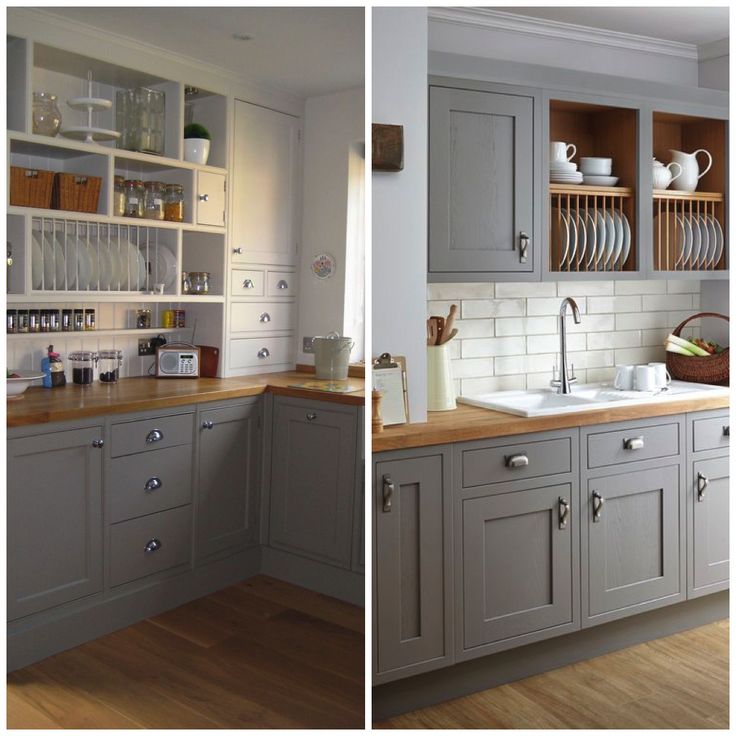
Pasting kitchen facades is quite simple. Most importantly, follow the following recommendations:
- choose a film of a suitable color, taking into account the preferences for a new kitchen interior. It is not necessary to take material with imitation of wood - you can take a plain film of light color, and then you will be able to make a small kitchen larger and make dreams come true for the implementation of a minimalist interior;
- It is best to remove kitchen fronts - this will make work easier. The fittings must be dismantled in any case;
- measure the parameters of each removed facade;
- the film must be applied to a clean, dry surface, i. facades must be thoroughly cleaned of stains of grease and dirt. This can be done with a soapy solution, or using dishwashing detergent. After that, it is necessary to remove the remnants of detergents and wipe the facades dry;
- if the facades are seriously damaged, some time will have to be spent on repairs.
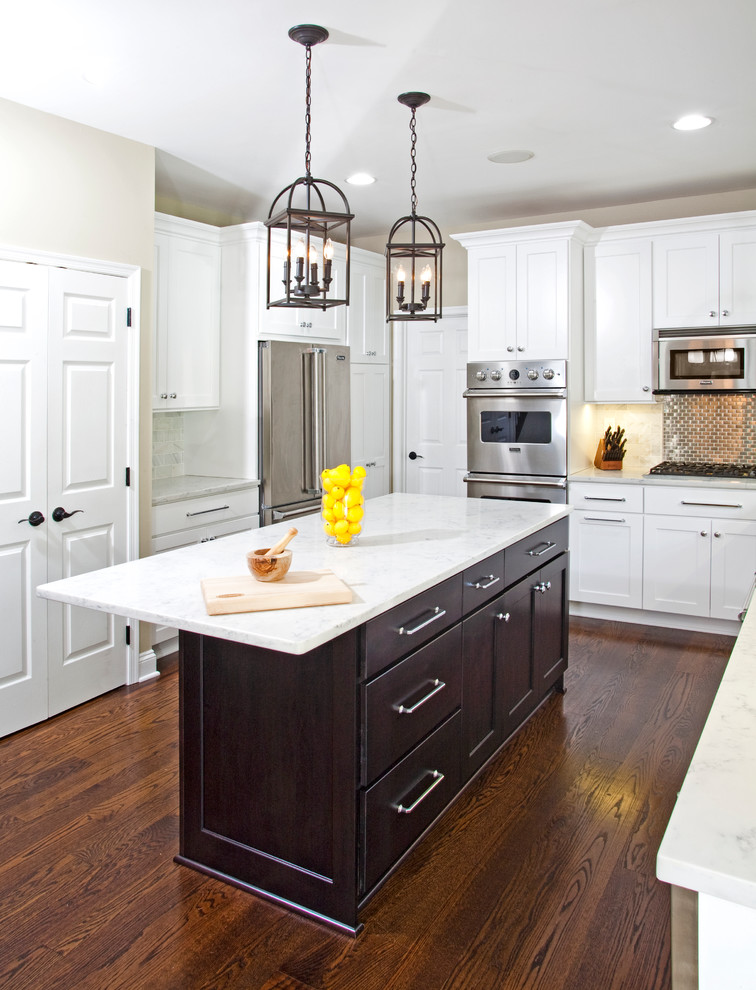 Peeled edges on the ends must be glued. The pits must be sanded, then filled with acrylic putty, sanded again and primed. If there are large potholes, then in their place it is better to glue a patch of plywood or veneer;
Peeled edges on the ends must be glued. The pits must be sanded, then filled with acrylic putty, sanded again and primed. If there are large potholes, then in their place it is better to glue a patch of plywood or veneer; - cut the film according to the measurements. Experienced craftsmen recommend adding 4-5 cm of allowance in places where the film will bend. If there is a large drawing on the film, then when cutting it out, it is necessary to control that it is located correctly. It is better to cut with a clerical knife - so the edge will be as even and neat as possible;
- Take the first piece of film, start peeling off the backing paper and apply the film with the adhesive side to the front. Controlling evenness, gradually peel off the protective layer and stick the film;
- The film can be rolled with a rubber roller or a plastic scraper. This removes the remaining air. It is necessary to smooth from the center to the edges. If air bubbles remain, they can be pierced with a needle and rolled again with a roller;
- if you suddenly notice that somewhere the film is glued crookedly, then within 5-6 hours the situation can be corrected.
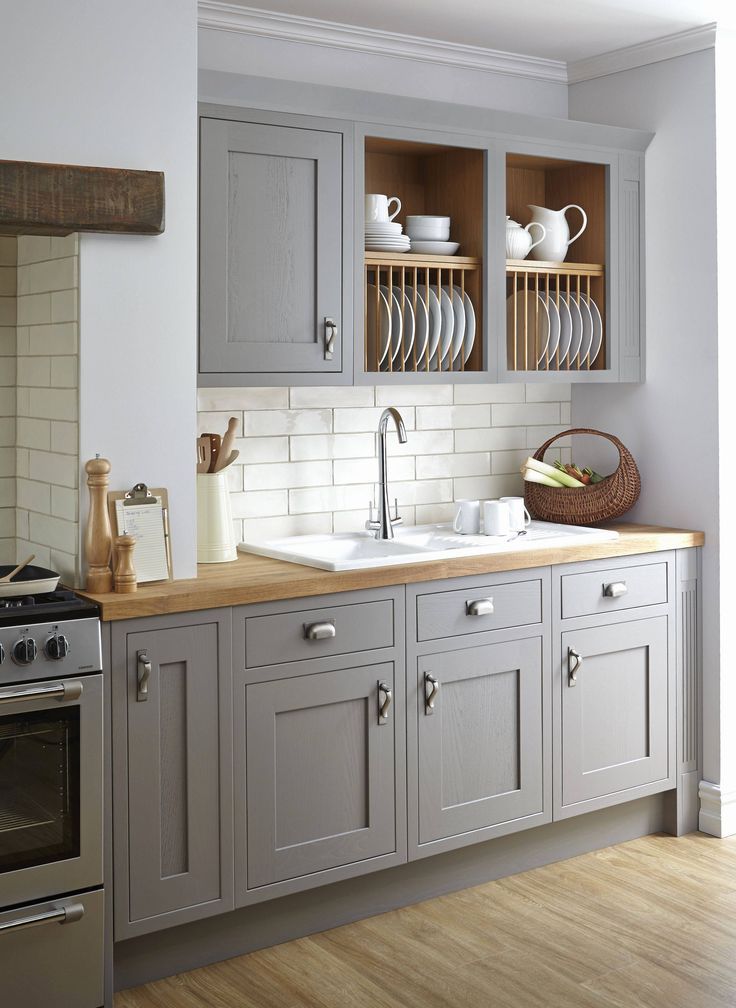 The film can be re-glued, but not more than 1-2 times, since then the glue will simply lose its properties;
The film can be re-glued, but not more than 1-2 times, since then the glue will simply lose its properties; - when all fronts are pasted over, you can screw them back;
- you can use the old fittings, or you can replace it with a new one that fits more into the updated style.
If the shelves are soiled to such an extent that no detergent can take them, they can also be pasted over with foil. The principle of operation is the same. The film can be chosen close to the original color of the shelves.
Replacing the fronts
Many people think that the fronts covered with film look somehow too modest. This is all, of course, a matter of taste and personal preferences, but it is difficult to radically change the kitchen with a vinyl film, because glass inserts or panels will not be added to the doors. To make serious changes to the interior of the kitchen, it is better to act radically and completely replace the facades. Yes, it will turn out more expensive than with a film, but still much cheaper than when buying a new headset. The method is great if the frame of the furniture is still strong enough and durable.
The method is great if the frame of the furniture is still strong enough and durable.
The easiest way will be for owners of modular furniture , which was bought relatively recently. Then it will be possible to buy facades of the required size and replace them with your own hands. But this is not often so lucky, because usually you have to make facades to order. It is not at all necessary to change wooden doors to wooden ones, and chipboard to chipboard. The uniqueness of this method of restoration lies precisely in the fact that the appearance of the headset can be dramatically changed using completely different materials.
The cheapest option is chipboard or plastic facades. MDF and wood will cost more. You can choose accessories and decorations, for example, use glass inserts, but all this will affect the price. Masters with hands, of course, can make all the facades on their own. If you have woodworking skills, then why not? But it is much easier and faster to turn to a specialized company , which will make facades for your headset.
Repair of kitchen facades in Moscow
For residents of Moscow and the region, we recommend the company "Kitchen Repair", which has been operating for over 20 years and specializes in the repair of kitchen facades. Experienced specialists can replace facades or repair existing ones by painting, enameling or sticking a film. Among the services of the company are also repair of accessories and replacement of countertops. All work is carried out at the facility, measurements are preliminarily carried out, the design and estimate are agreed, the required elements of the headset are made from the desired material. All work is guaranteed. You can see detailed information and examples of work on the page https://remont-kuhni.com/service/remont-kuhonnyh-fasadov/.
An example of the work of specialists from the company "Kitchen Repair"
Painting
The method is quite simple, but requires careful surface preparation. The main advantage of the method is the ability to paint the facade in any color.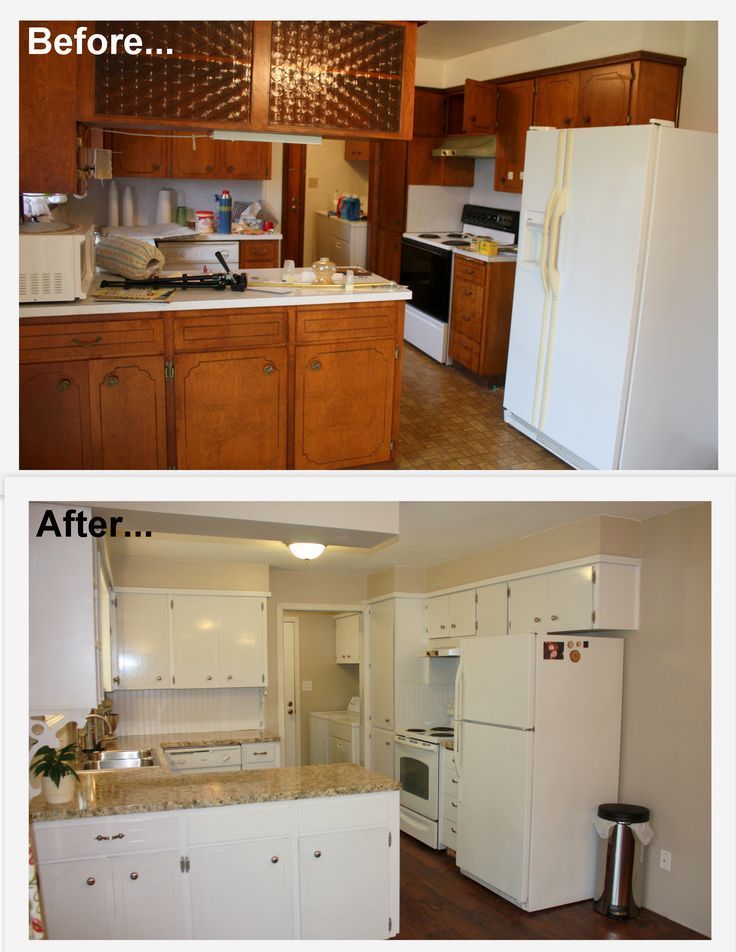 If you want to make your kitchen more daring, you can choose a bright shade, such as blue, green or orange. A win-win color is white, as well as many light shades, incl. beige, grey, cream, etc. Imagine in advance what the kitchen will look like, and get creative.
If you want to make your kitchen more daring, you can choose a bright shade, such as blue, green or orange. A win-win color is white, as well as many light shades, incl. beige, grey, cream, etc. Imagine in advance what the kitchen will look like, and get creative.
Simultaneously with painting the facades, they can be slightly transformed using moldings , special strips that are glued to the surface and give it an interesting relief.
The sequence of actions is as follows:
- remove the facades from the headset, dismantle the fittings and glass. Those elements that are difficult to remove can be sealed with masking tape;
- old varnish or paint can be removed most conveniently with a grinder. If PVC film was used as a decor, then it is better to use a building hair dryer. From the temperature, the film will melt, and it will be easier to remove it. It is better to work in a respirator so that small particles of the facade and the pungent smell of PVC do not enter the respiratory tract;
- if there are serious damages, they must be filled with filler and then sanded;
- the surface is rubbed with sandpaper, then dust is removed, degreasing is carried out;
- If you plan to use moldings , then they are attached at this stage.
 You can choose flat or textured planks, there are products that imitate stucco molding. It is better to grind the planks in advance, then they are cut into segments of the required sizes. Often, moldings are attached along the contour of the doors, or a pattern is formed from them closer to the center. Usually a 45 degree joint is used. After you have made sure that the figure is laid out evenly, the elements are glued, you can use glue for wood products. It is allowed to use nails without hats;
You can choose flat or textured planks, there are products that imitate stucco molding. It is better to grind the planks in advance, then they are cut into segments of the required sizes. Often, moldings are attached along the contour of the doors, or a pattern is formed from them closer to the center. Usually a 45 degree joint is used. After you have made sure that the figure is laid out evenly, the elements are glued, you can use glue for wood products. It is allowed to use nails without hats; - MDF, chipboard and wood absorb moisture well, therefore it is better to pre-coat them with a primer. The one that is designed for woodworking will go. It is better to apply two layers;
- you can now start painting. It is better to use acrylic paint or car enamel. The first is cheaper, the second is better in terms of moisture resistance and resistance to mechanical damage. You can use a brush, roller or spray gun. The paint is applied in 2-3 layers depending on the required color saturation.
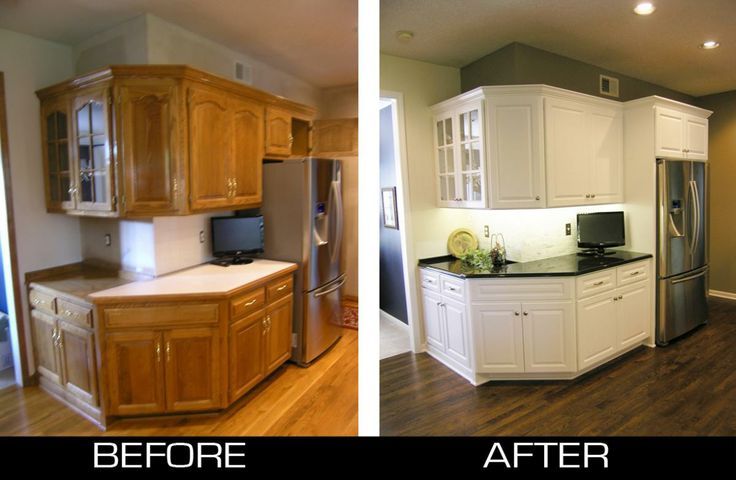 To guarantee, some craftsmen cover the facades with a layer of transparent varnish;
To guarantee, some craftsmen cover the facades with a layer of transparent varnish; - when the paint dries, the masking tape is removed, the fittings are returned to their place, and the facades themselves are hung on hinges.
If coloring seems too banal to you, then use glisal , a translucent glossy paint, in your work. It is applied in exactly the same way as acrylic paint, but while the coating dries, an interesting texture can be created on the surface. With a sponge, a bag or other improvised items, you can make a geometric pattern or an ornate pattern. If anything, part of the pattern can be removed with a roller. The result is an unusual result that will appeal to fans of ethnic style.
Lacquered
The variant is only suitable for fronts made of solid wood . The varnish allows you to reliably protect the wood and at the same time does not hide its chic natural look. When it comes to furniture, nitrocellulose, alkyd-carbamide, polyurethane, epoxy and polyester varnishes are used.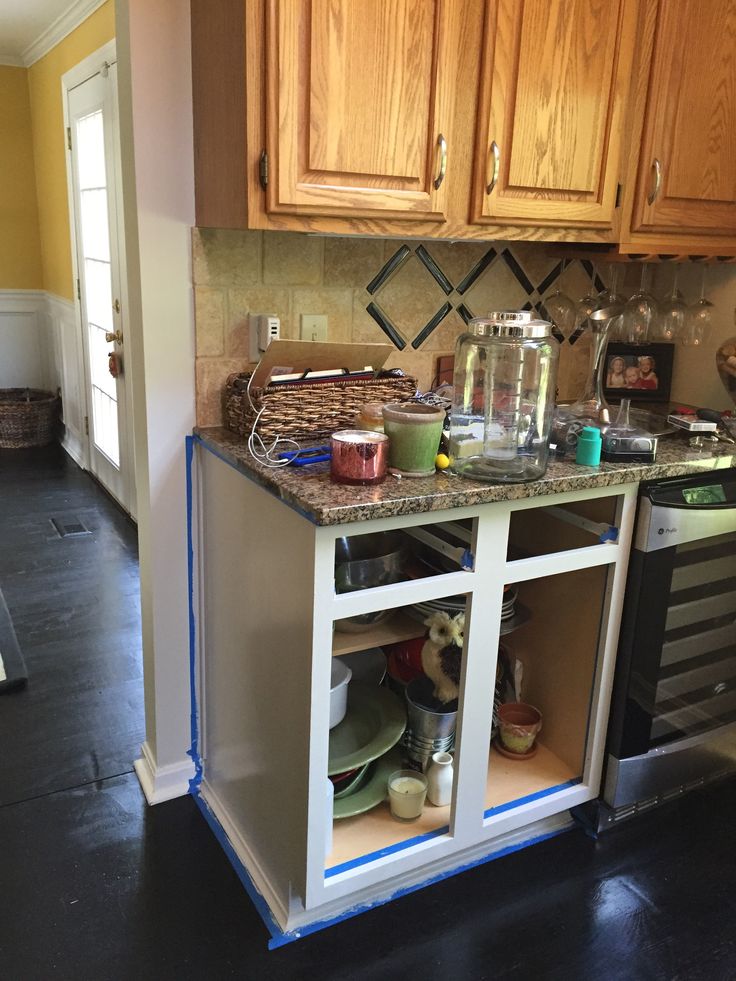 It is important that the varnish protects the wood from moisture and high temperatures. Varnishes have a not very pleasant smell, therefore it is better to carry out all work on the street. If this is not possible, then it is better to take a water-based material, it has almost no smell.
It is important that the varnish protects the wood from moisture and high temperatures. Varnishes have a not very pleasant smell, therefore it is better to carry out all work on the street. If this is not possible, then it is better to take a water-based material, it has almost no smell.
It is very important to decide in advance on the gloss level of . The varnish can be glossy, which will add visual volume to the headset, or it can be matte, which will emphasize the wood pattern. The degree of gloss is indicated on the packaging as a percentage of reflected light: a glossy varnish will reflect up to 90% of the light, matte - only 10%, there are many intermediate options. Which is better depends on your preferences.
The procedure is as follows:
- remove the facades, dismantle the fittings, if necessary, seal some parts with masking tape;
- remove the old lacquer layer, you can use sandpaper. Dust is best removed with a vacuum cleaner.
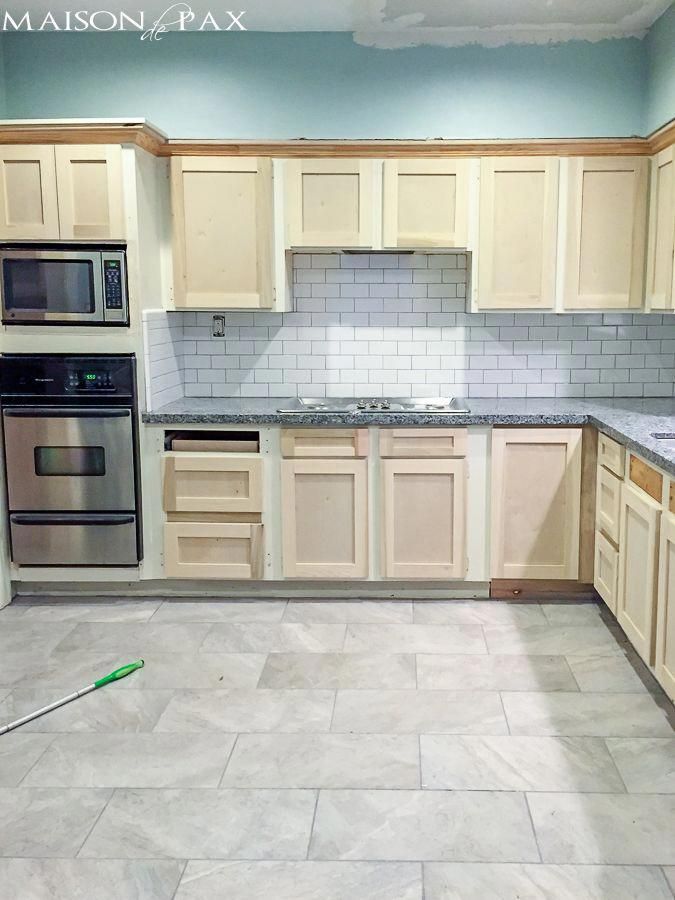 After finishing work, the surface is wiped with a damp cloth, then it is allowed to dry thoroughly;
After finishing work, the surface is wiped with a damp cloth, then it is allowed to dry thoroughly; - apply primer;
- varnish is applied with a brush or roller, it is better that each new layer is slightly thinner than the previous one;
- some types of lacquer should only be used outdoors;
- drying speed - different for different varnishes, the average is indicated on the package;
- After drying, the tape is removed and the fittings are returned to their place.
To create the effect of aging , several layers of stain can be applied.
Hardware update
We all have heard about the great impact of small things, but many, however, refuse to believe in the truth of this statement. Designers, without hesitation, convince us that sometimes changing handles on a kitchen set can transform a kitchen space. Most often, however, the replacement of fittings is carried out along with the renewal or replacement of facades.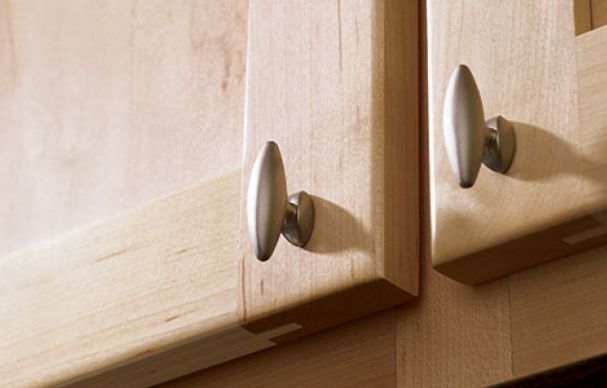
It happens that the kitchen set itself is perfectly preserved, and the handles from constant interaction with them have become flaky, dull, or completely deformed in places. Take off your old hardware and head to a specialty store, where you can choose from a wide variety of handles. The main thing is that the size matches and you do not have to drill new holes.
If the old handles fit perfectly into the style of the kitchen, then you can find new ones that are as similar as possible to them. If you want something fresh, or if the kitchen facade has become completely unrecognizable after simple manipulations, then pick up handles in a new style. The range of manufacturers includes handles in modern and classic style, smooth chrome-plated and carved antique. There are handles with imitation of leaves and animals, there are inlaid glass and stones. There are wooden, plastic and metal, transparent and colored - everyone can choose the right one.
Possibly hinges and pull-out shelf mechanisms need to be replaced.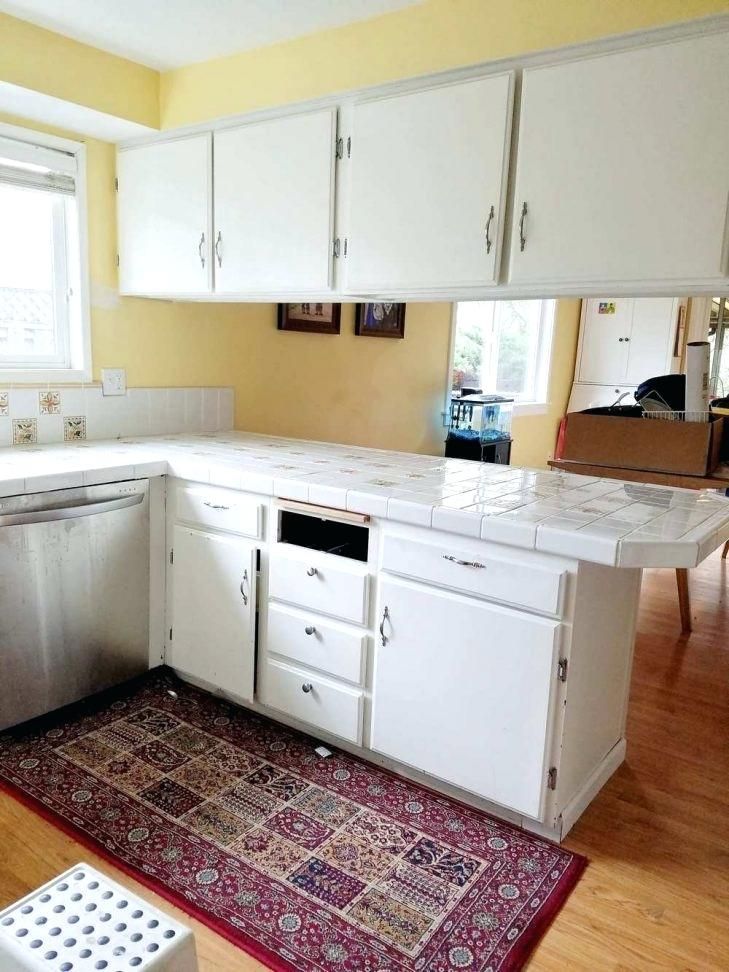 Before going to the store, these elements should be dismantled and taken with you as a sample. New loops are selected according to the size of the previous ones. It happens that the existing holes are very loose, and it is impossible to attach new loops to them. Then they will have to be puttied with an acrylic-based composition in the color of the facade, sanded, varnished or painted, and only then drill new holes and install purchased hinges. Old roller mechanisms can be replaced with ball ones. All these actions give a huge result - using the headset becomes more pleasant and comfortable.
Before going to the store, these elements should be dismantled and taken with you as a sample. New loops are selected according to the size of the previous ones. It happens that the existing holes are very loose, and it is impossible to attach new loops to them. Then they will have to be puttied with an acrylic-based composition in the color of the facade, sanded, varnished or painted, and only then drill new holes and install purchased hinges. Old roller mechanisms can be replaced with ball ones. All these actions give a huge result - using the headset becomes more pleasant and comfortable.
Replacing glass
As a rule, glass inserts in facades are simply washed well to restore their original perfect appearance. But what if you want something new? You can replace the existing transparent glass with frosted or colored glass, then the kitchen will noticeably change. True, glass will have to be made to order, and not everyone can handle the replacement itself.
A more budget option is to buy a self-adhesive film. With its help, you can give the glass the desired shade without depriving them of transparency. It will help create a matte effect or imitate a real stained glass window. Anyone who knows how to use a tape measure or centimeter tape, scissors and is able to accurately glue the film can definitely cope with gluing the film.
With its help, you can give the glass the desired shade without depriving them of transparency. It will help create a matte effect or imitate a real stained glass window. Anyone who knows how to use a tape measure or centimeter tape, scissors and is able to accurately glue the film can definitely cope with gluing the film.
There is also the old-fashioned method, which involves applying a mixture of chalk powder and silicate glue to the glass. In two layers, this material is applied to the glass, after which they become dull.
Decoupage of kitchen fronts
Decoupage is a great way to update your kitchen set and give it a touch of Provence style. After the transformation, the facades will look as if talented artists painted them for you, but you will know that you made all this beauty with your own hands. Absolutely any pattern can be applied to cabinets and shelves, but usually they choose something related to plant and kitchen themes: images of fruits and vegetables, coffee, jars of spices and cereals, flowers, etc.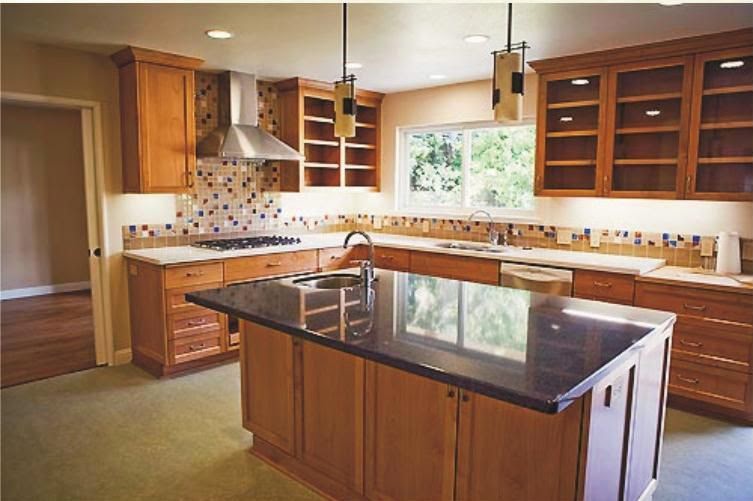 Decoupage will help decorate the facades with ornaments in the style of Gzhel or Petrikovskaya painting. The main thing is to find a suitable drawing - no one limits your imagination.
Decoupage will help decorate the facades with ornaments in the style of Gzhel or Petrikovskaya painting. The main thing is to find a suitable drawing - no one limits your imagination.
Everyone will be able to cope with the restoration of facades on their own:
- remove all doors, remove fittings;
- If the surface of the headset is perfectly even and smooth, then it is enough to wash it well to get rid of grease and dirt stains. If there are defects, it is better to sand the surface. First use fine-grained, and then coarse-grained sandpaper. If you have a grinder at your disposal, it will greatly simplify the process. In the presence of cracks, depressions, pits, it is better to fill them with putty. When it dries, the treated areas are sanded again. After that, the facades can be primed, but many skip this stage;
- decoupage technique is suitable not only for wood, chipboard and MDF - it can also be used to decorate plastic and glass facades. Preparing them for decoration is very simple - just get rid of all the dirt and grease;
- The easiest way to use three-layer decoupage napkins.
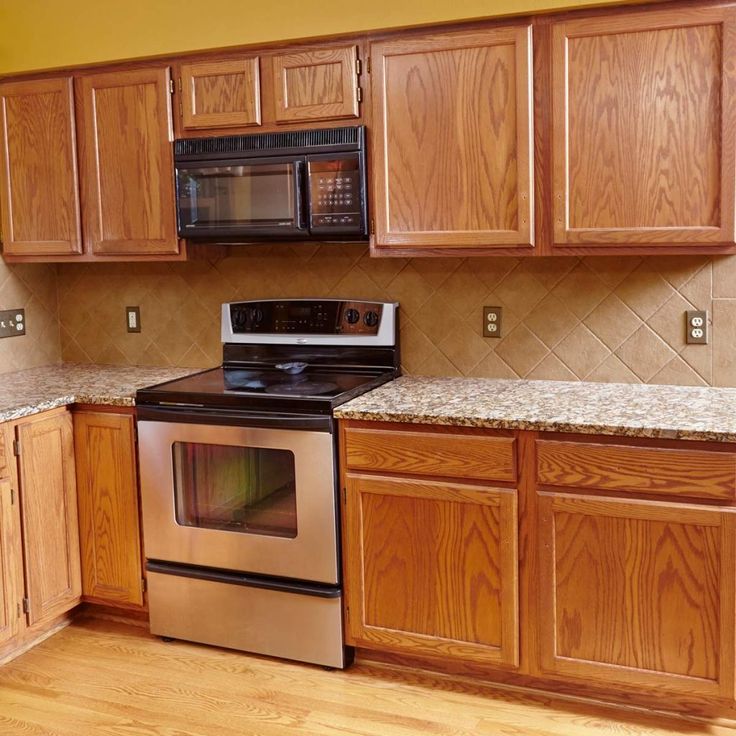 Think in advance in which part of the facade the drawing will be located. Don't use images that are too small. Different lockers can be decorated with pictures in the same style. The image can be glued to ordinary PVA glue;
Think in advance in which part of the facade the drawing will be located. Don't use images that are too small. Different lockers can be decorated with pictures in the same style. The image can be glued to ordinary PVA glue; - now it remains to open the facade with acrylic varnish, it is better to use 3-4 layers, each is applied after the previous one has completely dried. It is easiest to work with a narrow brush with long bristles;
- it remains to return the fittings to their place and mount the facades.
If this is not your first work in the decoupage technique, then you can use not only special napkins. Experienced craftsmen know that fragments of wallpaper with a suitable pattern, and even maple for the kitchen table, will do, not to mention the fact that the image you like can be printed on a printer.
Decoration with ceramic tiles
Almost everyone has leftover tiles after repairs. A lot of material for this method will not be needed, because even buying a new tile will not hit the budget.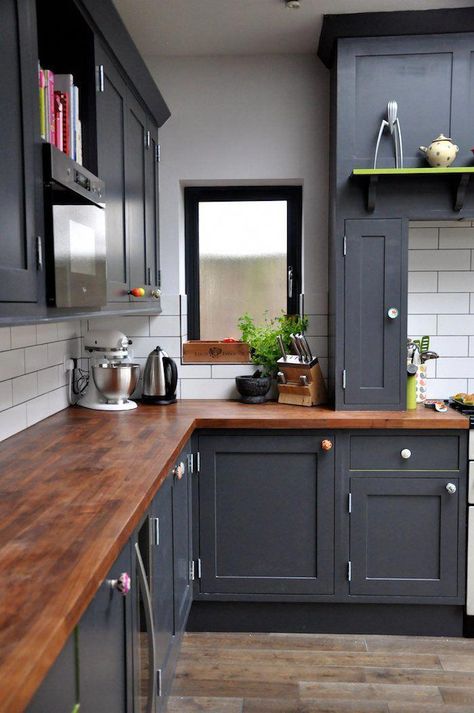 Naturally, not all facades are laid out with tiles. A fragment with a beautiful pattern can be glued in the center. It can be one tile or four smaller tiles laid out in a square or diamond shape. Small tiles can lay out the contours of the cabinets. Often such decoration is used to decorate the lower or upper edge of the headset. The image on the tile should match the overall style of the kitchen.
Naturally, not all facades are laid out with tiles. A fragment with a beautiful pattern can be glued in the center. It can be one tile or four smaller tiles laid out in a square or diamond shape. Small tiles can lay out the contours of the cabinets. Often such decoration is used to decorate the lower or upper edge of the headset. The image on the tile should match the overall style of the kitchen.
The principle of operation is as follows:
- it is better to remove the facades, dismantle the fittings;
- as a minimum, the surface must be washed and degreased with an alcohol-based compound. If desired, the facade can be painted, guided by the tips described above;
- lay the tiles on the surface in advance, determine the ideal place for them, it is better to trace them carefully with a pencil;
- prepare the tile adhesive, apply it on the facade and start gluing the tiles. The principle is almost no different from the usual installation of tiles, only glue is needed so that it can hold the tiles on a wooden (or other) facade;
- When everything is dry, you can frame the tile with a molding to make the decor look finished.

Decoration with rattan inserts
The principle is the same as with ceramic tiles. Rattan inserts will look appropriate with ethnic and eco-style. Rattan perfectly copes with the effects of moisture, therefore it is well suited for the kitchen. It can be used to replace glass inserts along with large-scale restoration of facades. Rattan inserts can be glued over blind cabinets. A variety of weaves and the presence of several shades will allow you to choose the appropriate insert option.
It is easy to work with rattan:
- a fragment of the desired shape and size is cut out, you can use secateurs or metal scissors;
- the section can be attached to the facade with a stapler;
- around the perimeter of the insert, wooden planks are mounted, pre-treated with an antiseptic. You can use glue;
- with rattan, the main thing is not to overdo it - small inserts on the largest cabinets will be enough to bring the necessary notes into the interior.

Use of chintz
Fabric decoration is rarely used, because this is your chance to make the kitchen unique. You will need a piece of fabric with a suitable pattern, and then everything is simple:
- the beginning, as always, is to dismantle the facades and fittings;
- cupboards are measured, the fabric is cut out and glued on pre-washed and degreased facades;
- facades are covered with a colorless varnish in 5-7 layers, it will protect the fabric from moisture, grease and odors;
- it remains to return the fittings to their place, and you can purchase new, more suitable handles;
- An interesting effect can be achieved if a lampshade for a lamp is made from the same fabric, or chair covers can be sewn together.
What else is used to update kitchen facades?
The fantasy of home craftsmen knows no bounds, and folk ingenuity has generated a lot of interesting non-trivial ideas on how else to ennoble an old kitchen facade. The following materials are used for this:
The following materials are used for this:
- Vinyl stickers, the range of which impresses even experienced designers. Monochrome boring facades can be decorated with animal figurines, world landmarks or inspirational phrases. Gluing and removing such decor is very simple;
- sea pebbles and mosaics are glued on the principle of ceramic tiles, allowing you to create interesting decorative effects;
- wooden decor. There are ready-made kits for children's creativity, but with skill, you can cut wooden figures yourself. It remains only to open them with varnish and glue them to the facades. This decor looks best on wooden facades.
How do I update my kitchen worktop?
Renewing facades and leaving the countertop unattended means not finishing what you started. The countertop is the most vulnerable point of the kitchen set, because its surface constantly encounters drops of water and fat, mechanical stress, and high temperature. Chipboard countertops are usually the first to suffer, and when the facade looks even more or less normal, the work surface leaves much to be desired.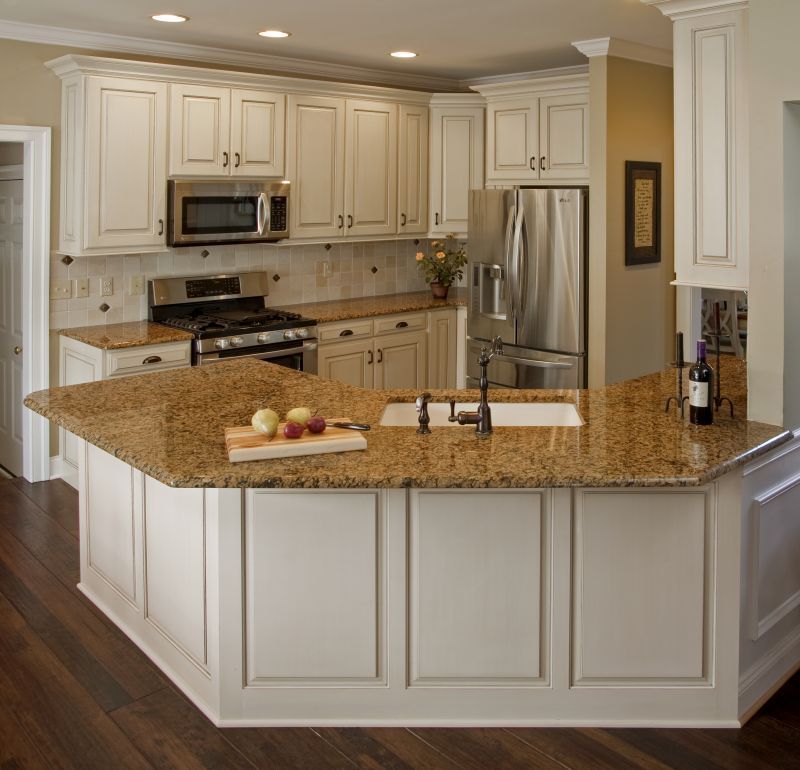
What can you do to update your kitchen worktop? Several options:
- glue the vinyl film . The option is not very durable, but simple;
- carry out varnishing – method for wooden worktops;
- painting is carried out according to the principles described above;
- tiling , and usually tiles are used in the color of the one with which the kitchen backsplash is lined. The tile is easy to clean, not afraid of moisture and high temperature, relatively easy to install. The weight of the headset, however, will greatly increase. If the frame is weak, then it may not withstand. They begin work by attaching a metal corner around the perimeter of the tabletop. The tiles are laid on ordinary tile adhesive, the gaps are made minimal. The glue dries quickly, so it’s best not to cover the entire countertop with it at once. It remains only to wipe the seams and open the tile with a protective layer of varnish.
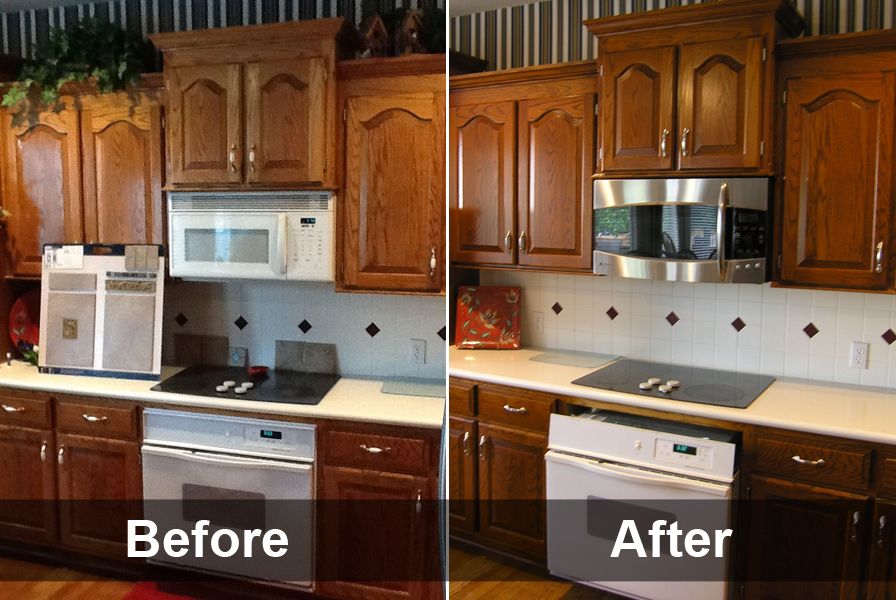 Work in a similar way with mosaic ;
Work in a similar way with mosaic ; - tempered glass finish , under which you can use anything: sand and small pebbles, coins, cork pieces, drink bottle caps, a printed image of a beach, forest or some kind of pattern. Glass is planted on glue and firmly protects the entire decor from negative influences.
If the worktop is still in good condition, but has only one or two noticeable flaws (for example, burns or stab spots), you can carry out local repair. The defective place is carefully processed with a cutter to end up with a quarry-type depression. It is filled with putty on wood in the color of the countertop, the material is added in portions, well tamped, the excess is removed with a knife. The treated area is sanded, polished and painted. If you can accurately repeat the color or pattern of the countertop, then the place of repair will be invisible. When everything is really bad with the countertop, it is better to make its complete replacement by contacting professionals.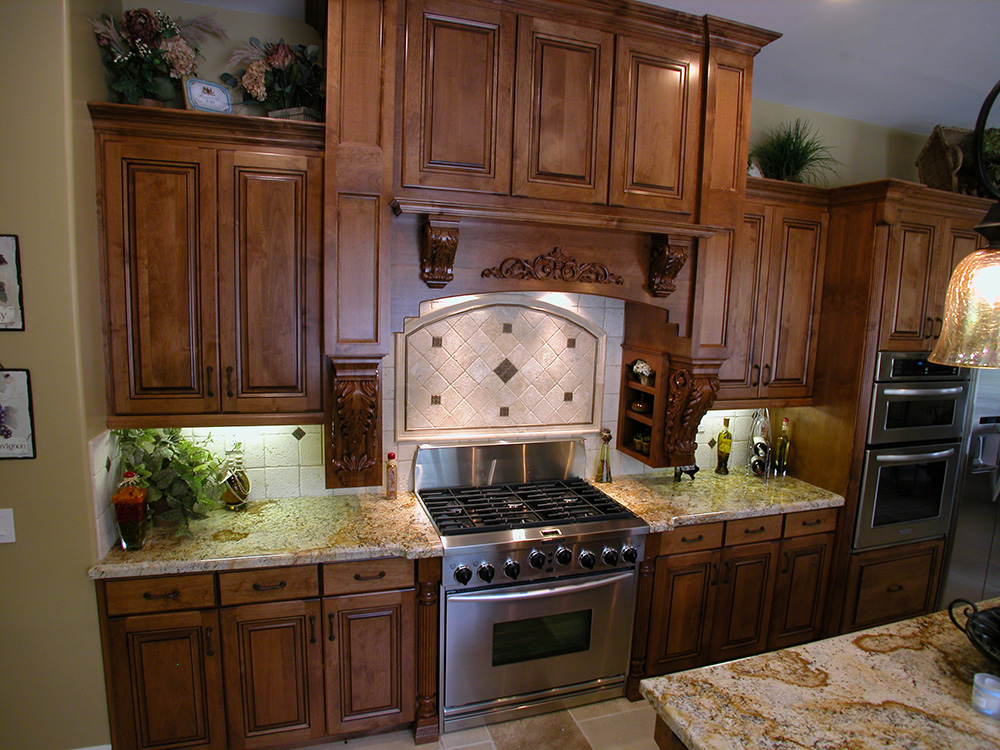
By combining the methods described above, you can transform your kitchen set in such a way that all guests will think that you have bought new furniture. If you combine this transformation with a redecoration in the kitchen, then the result will be impressive at all.
The article was written for remstroiblog.ru.
Tags:Kitchen
how to repair facades and other elements with your own hands set
To change or update the kitchen, it is not at all necessary to change the set, especially since such expenses significantly affect the budget. One of the advantages of modern furniture is high maintainability, and the kitchen is no exception.
Restoration of a kitchen set is actually a very interesting job, although not an easy one.
Restoration of coating
Restoration of kitchen facades depends on both the base material and the finishing layer. In most cases, if the main material is damaged, then the entire facade will have to be replaced.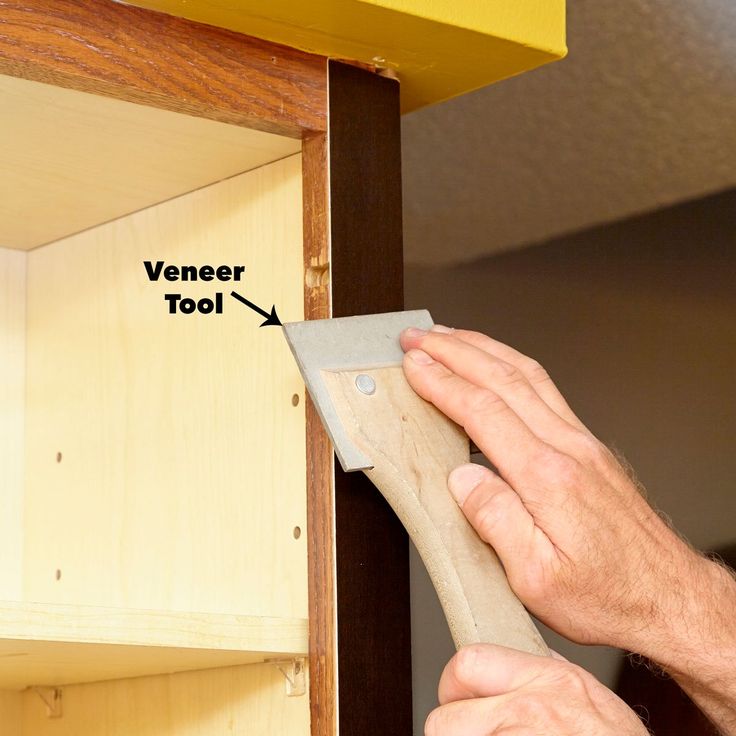 The exception is small scratches and chips, which can be repaired with a special wood putty or wax pencil.
The exception is small scratches and chips, which can be repaired with a special wood putty or wax pencil.
Damage to the finish is not so simple.
- PVC film. M The material does not hold very well on chipboard or MDF due to its different nature. Over time, as well as under the influence of moisture and temperature changes, the film peels off. The advantage of the material can be considered that the restoration of such a coating is quite possible.
In case of small defects, the PVC film is simply glued: PVA glue, Moment, is drawn into the syringe from the needle and the area under the film is filled. Then the coating is smoothed and fixed with adhesive tape for 4 hours. If the damage is great, you can remove the entire old film from the facade by heating it with a hairdryer, and stick a new one in the same way. In this case, it is better to use liquid nails.
- Melamine and acrylic films have much better adhesion to wood material, so peeling is rare.
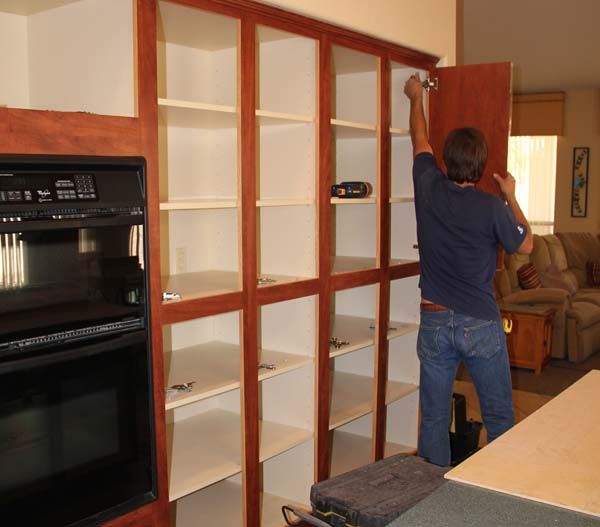 Small areas are glued in the same way, but with extensive damage, the facade cannot be repaired at home: the coating will have to be changed in the workshop.
Small areas are glued in the same way, but with extensive damage, the facade cannot be repaired at home: the coating will have to be changed in the workshop. - Acrylic panel. This kind of kitchen renovation is not possible. In case of severe chips, scratches, the sash must be replaced with a new one.
- Veneer is as easy to stick as PVC film. Replacing it is also not difficult: the material is produced with glue already applied to the back.
- Enamel. Do-it-yourself kitchen facade repair is quite possible, although the work requires extreme accuracy. Firstly, it is necessary to clean up scratches or delaminations, secondly, to choose exactly the same shade, and thirdly, to apply very carefully. With a large area of damage, it is better to entrust the work to a professional.
Renovation with PVC foil
Restoration is not always understood only as the return of facades to their original appearance and replacement of fittings.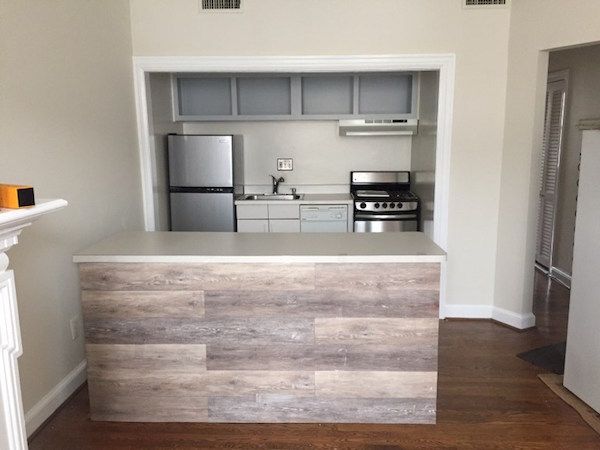 Modern methods of decorating allow you to change the look of the kitchen beyond recognition, using quite affordable means.
Modern methods of decorating allow you to change the look of the kitchen beyond recognition, using quite affordable means.
One of these options is a vinyl film, or rather a sticker with an image on a PVC film. Moreover, the image can be anything - from a wood pattern to an ornament of any complexity or landscape.
Quite often, this technique is used to change the style of the kitchen or just diversify the design. To do this, decorate a zone or two sashes with a sticker. If you want to update your entire suite, all facades are pasted over with vinyl film. The choice is entirely determined by the style of the room.
Panel fronts are very suitable for such kitchen renovation. At the same time, the frames are painted or also pasted over with a film of a different color, and the inner plane is decorated with a self-adhesive film.
In the photo - a good solution in the Art Nouveau style.Staining
Restoration of kitchen facades with staining is the second most popular method.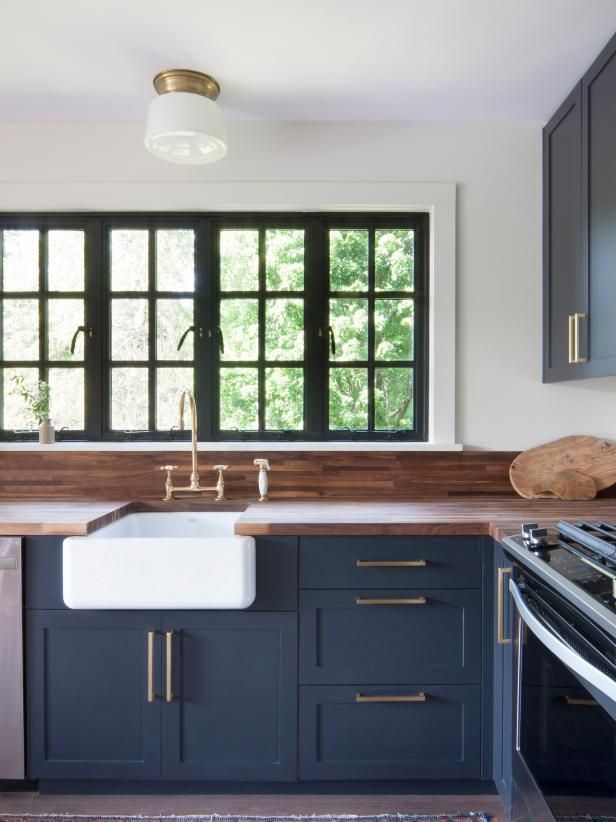 It is worth noting that it is far from being as simple as it seems at first glance. All facades are painted with the exception of MDF doors with acrylic panels.
It is worth noting that it is far from being as simple as it seems at first glance. All facades are painted with the exception of MDF doors with acrylic panels.
Polyurethane enamels are preferred for kitchen materials. They are resistant to moisture and temperature extremes, are not afraid of light, dry quickly and are safe. In addition, the palette of colors includes all sorts of shades and textures - from matte to high-gloss, literally with a mirror finish.
How to restore a kitchen set with paint?
- Remove all fittings from the sashes, then remove the facades themselves.
- The finishing layer is completely removed, the surface is cleaned with sandpaper.
- The material is primed - a water-based polyurethane primer is recommended. The procedure should be repeated and wait for the primer to dry completely.
- Apply the paint using a roller and brushes of various sizes. The paint must be applied in several layers, after allowing each layer to dry completely.
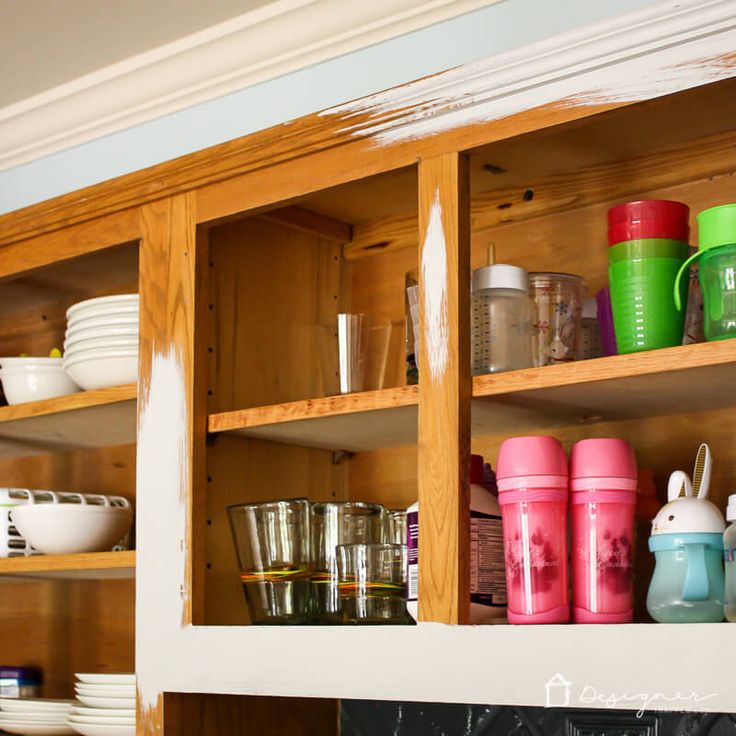 The carved parts of the product are especially carefully painted. Using a stencil, you can form a pattern, ornament or image on the sash.
The carved parts of the product are especially carefully painted. Using a stencil, you can form a pattern, ornament or image on the sash. - When restoring the facade, do not forget about the final stage - varnishing. No matter how good the enamel is, the varnish will prevent its mechanical damage.
Staining techniques are different. Depending on your own skill, you can simply paint the facade in one color, you can paint it, you can paint the kitchen set with “metallic” paint - it includes aluminum powder.
A fashionable aging effect is obtained in this way: the facade is covered in two layers of paint of different shades, and after drying, a solvent is applied to the surface. In this case, the top layer is covered with cracks. With proper skill, you can also get the “chameleon” effect: this will also require painting in two colors, but after drying, the facades are covered with glossy varnish.
Decoupage
To restore the facades of kitchen furniture, sometimes they resort to not quite traditional methods.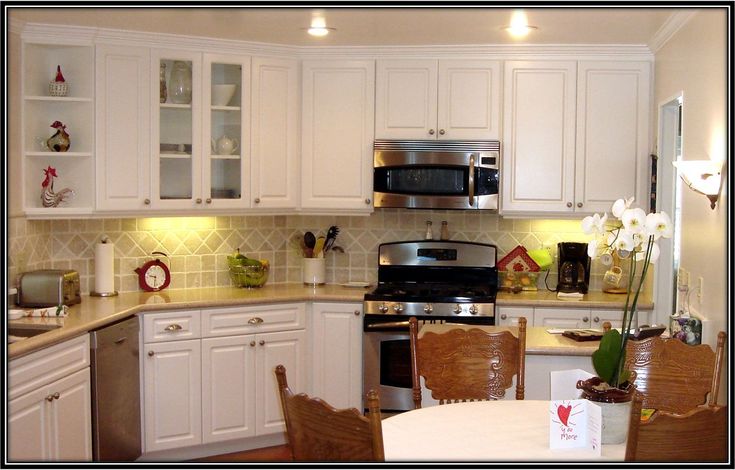 Decoupage has become a trendy retro kitchen touch. But in practice it is used quite rarely, as it requires taste and accuracy in execution.
Decoupage has become a trendy retro kitchen touch. But in practice it is used quite rarely, as it requires taste and accuracy in execution.
Decoupage material is special napkins with bright original images. In fact, in this capacity, you can use newspaper clippings, pieces of fabric, fragments of lace, your own old photos, a finished image from albums or books. In the kitchen, decoupage using small items will be very useful: coffee beans, herb stalks and spikelets, dried flowers, and the like.
The decoupage technique is quite simple: do-it-yourself kitchen set is sanded with large and then fine sandpaper. Painted with a background color - acrylic paint is used, and then with the help of stationery glue, the image or objects are fixed on the surface. Be sure to cover the craft with several layers of transparent furniture varnish after the glue has dried.
In the photo - "vegetable" decoupage of the kitchen.Lacquering
Repairing a kitchen set made of wood comes down to restoration, especially if the material is quite expensive wood.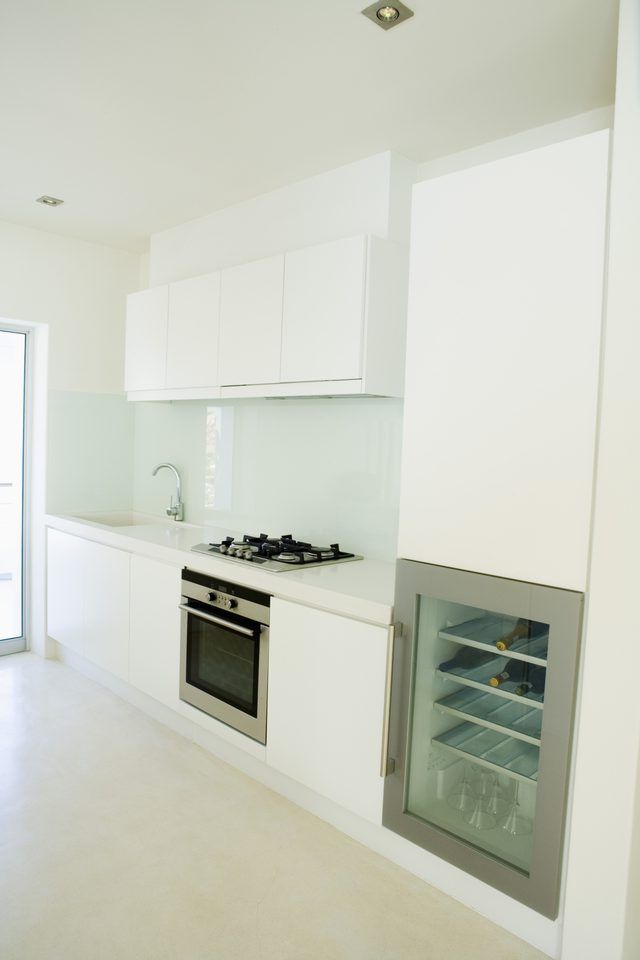 Yes, and old wooden furniture today, and centuries ago, is perceived as a symbol of solidity. In addition, wooden kitchen sets are not that difficult to update.
Yes, and old wooden furniture today, and centuries ago, is perceived as a symbol of solidity. In addition, wooden kitchen sets are not that difficult to update.
Varnishing and toning are the most popular techniques, and they are often combined. The varnish can be used as a matte transparent, glossy or even colored. It does not radically change the color palette of furniture, but gives a shade. Stain is used in cases where they really want to change the color of the facade by a couple of tones.
The technology of both processes is similar.
- Facades are removed from hinges, fittings are removed.
- The surface is cleaned of old varnish or other finishes, treated with sandpaper, coarse and fine, and then carefully sanded.
- The cleaned surface is primed.
- After the primer has completely dried, a layer of varnish is applied to the facade with a brush. After the varnish has dried, the procedure is repeated at least twice.
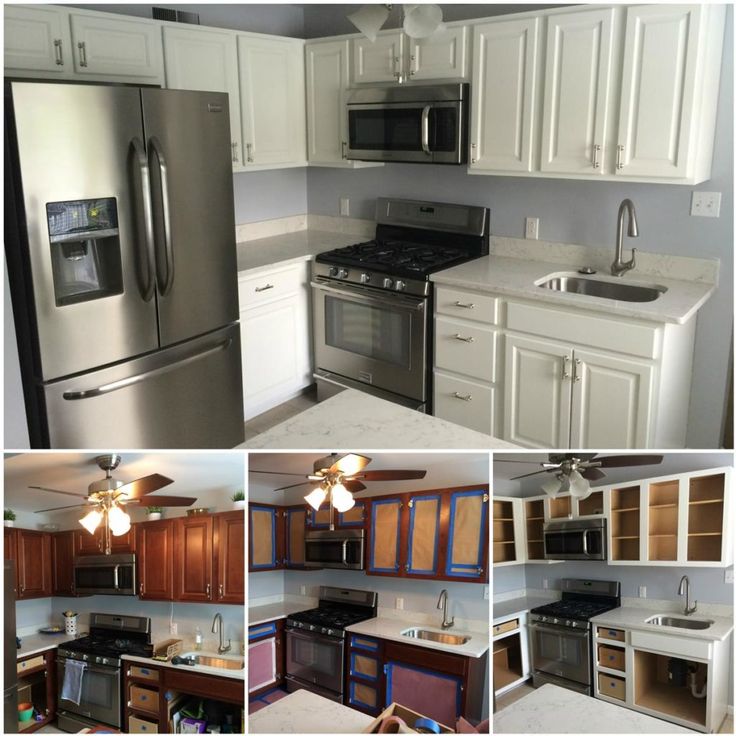
The stain is applied in the same way, after the primer has dried. Depending on how much they want to change the color of the furniture, tinting is carried out from 1 to 4 times. Then the product is varnished at least twice.
Molding will help to diversify the look of the updated furniture - a furniture plinth of various shapes. It is very diverse in size and configuration. The molding is glued to the facade surface and can be painted and varnished together with the sash.
Unusual solutions
The fantasy of home craftsmen literally has no limits, so completely unexpected things can serve as material for a kitchen renovation.
- Photowall-paper - the material in terms of density and strength is by no means inferior to PVC film. It is fixed to the surface of chipboard, MDF and even plastic with liquid nails. Photowall-paper is cut according to the sizes of facades and pasted in the most usual way. After the glue has dried, the products must be varnished.
